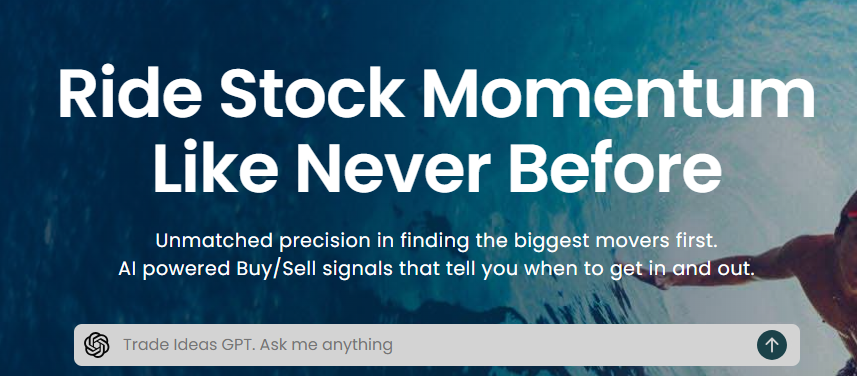To ensure that the software you select will provide accurate insights and forecasts, you must be able to measure its performance and accuracy. These are the 10 most essential tips for evaluating these platforms:
1. Backtesting Results
What to look for: Determine if the platform offers backtesting to determine how well its predictions would have performed using previous data.
Why It Matters: Backtesting helps validate the AI model's accuracy by comparing predictions with actual outcomes from the past.
Search for platforms that allow you to customize backtesting parameters.
2. Real-time Performance Monitoring
What to look out for What happens to the platform in real-time situations.
Why It Matters : Real-time platform performance is better than backtesting using historical data.
Tip: Try a free trial or demo account to compare real-time market forecasts with actual market movements.
3. Prediction Error Metrics
What to look for: Use metrics such as Mean Absolute Error or Root Mean Squared Error or R-squared, to determine the accuracy of predictions.
Why it's Important: These metrics provide a quantitative measure of how closely predictions are in line with the actual results.
Tip: Platforms which openly disclose these metrics are generally more transparent and reliable.
4. Ratio of Success and Win Rate
What to look out for: Examine the winning rate of the platform that is the percent of predictions that are right. Also, look at its success ratio (the return on trades on the basis of predictions).
Why is it Important: High win rates and success ratios show greater accuracy in prediction and a higher chance of profits.
Tips: Be wary of sites that advertise unrealistic winning rates (e.g. 90, 90 %+), since the system cannot be perfect.
5. Benchmarking against Market Indices
What to look for: Compare the platform's predictions and performance to the important market indexes, like S&P 500 or NASDAQ.
Why It Matters This will help determine if the platform outperforms or is underperforming the market in general.
Tip: Look for consistent outperformance over multiple time periods, not just short-term gains.
6. Consistency in Market Conditions
What to look out for: How the platform performs when there are various market conditions.
Why It Matters: A robust platform should be able to perform in a variety of markets, not only in favorable conditions.
Tips: Try the predictions of the platform in volatile times or during market fluctuations.
7. Transparency in Methodology
What to Watch Out For Know AI models algorithms, techniques, and models (e.g., neural networks, reinforcement learning).
What is important Transparency is crucial since it lets you assess the reliability and scientific accuracy of the system.
Beware of platforms that use "black box models" that don't explain how to generate predictions.
8. Users Review and Independent Testing
What to look for Review reviews from customers and independent testing or third party reviews.
What's important: Independent reviews, testing and evaluations provide unbiased and objective information about the platform accuracy and performance.
Read user reviews on forums like Reddit copyright and financial blogs.
9. Risk-Adjusted Returns
What to look for What to Look For: Assess the performance of your platform using risk-adjusted metrics like the Sharpe Ratio or Sortino Ratio.
Why It Matters What is important? on the amount of risk is taken in order to earn returns. This gives the most complete view of the performance.
Tip: A Sharpe Ratio (e.g. over 1) indicates better risk-adjusted returns.
10. Long-Term Track Record
What to look for What to Look For: Examine the platform's performance over a longer period (e.g. 3 to 5 years).
What's important Why it's Important: Long-term performance is a more reliable gauge of reliability when in comparison to results from short-term.
Avoid platforms showcasing only short-term successes or cherry-picked outcomes.
Bonus tip: Sign up for the demo account
Demo accounts or trial versions allow you to test the platform's predictions in real-time without risking actual money. This will allow you to test the accuracy and effectiveness.
Follow these tips to thoroughly evaluate the accuracy, performance and reliability of AI stock prediction and analysis platforms. It is then possible to select the one that is most compatible with your goals for trading, and your risk tolerance. Remember that no system can be guaranteed to be 100% accurate, so using AI insights with the results of your own research is often the best option. View the most popular our site for website recommendations including best ai trading app, chart ai trading assistant, options ai, best AI stock trading bot free, ai for stock predictions, stock ai, AI stock, best AI stock, chart ai trading assistant, ai trading tools and more.

Top 10 Tips For Evaluating The Educational Resources Of AI stock Predicting/Analyzing Trading Platforms
In order for users to be capable of successfully using AI-driven stock predictions as well as trading platforms, understand results, and make well-informed trading decisions, it's crucial to evaluate the educational resource provided. Here are ten guidelines for assessing the quality and utility of these tools:
1. Complete Tutorials and Guides
TIP: Look if there are tutorials or user guides for advanced as well as beginner users.
Why: Users can navigate the platform more efficiently with clear directions.
2. Webinars and Video Demos
Tip: Look for video demonstrations, webinars or training sessions that are live.
Why: Visual content and interactive content makes it easier to understand complex concepts.
3. Glossary
Tip - Make sure that the platform includes the glossary or definitions of key AI and finance terms.
Why: This helps users, especially beginners, understand the terminology employed in the platform.
4. Case Studies & Real-World Examples
Tip: Evaluate whether the platform offers cases studies or examples of how the AI models were utilized in real-world situations.
Why? Practical examples help users understand the platform as well as its applications.
5. Interactive Learning Tools
Check out interactive tools, such as simulators, quizzes and Sandboxes.
The reason: Interactive tools let users to test their knowledge without risking real money.
6. Content is updated regularly
TIP: Make sure that the educational materials are regularly updated to incorporate the latest developments in technology, market trends, or regulatory changes.
Why? Outdated information may cause confusion about the platform or its improper use.
7. Community Forums and Support
Find active support forums and forums where you can discuss your concerns or share your thoughts.
The reason: Expert and peer advice can assist students to learn and resolve issues.
8. Programs of Accreditation or Certification
Make sure to check if it has accredited or certified classes.
Why: Formal recognition of knowledge can increase credibility and motivate users to further their education.
9. User-friendliness and accessibility
Tip. Evaluate whether the educational resources you are making use of are readily available.
Easy access to the content allows users to study in a way that best suits them.
10. Feedback Mechanisms for Educational Content
Check to see if users are able to provide feedback about instructional materials.
The reason is that feedback from users can help improve the quality and relevance of the content.
A variety of learning styles are offered.
Be sure that the platform supports a range of learning formats to suit different learning styles (e.g. audio, text videos, text).
By thoroughly assessing these aspects it is possible to determine if the AI stock prediction and trading platform has a robust education component to help you realize its potential and make informed trading decision. View the top rated ai options for site info including trading ai tool, ai options, best AI stock prediction, ai investment tools, stock predictor, ai software stocks, can ai predict stock market, best ai penny stocks, best AI stocks, best AI stocks to buy now and more.
